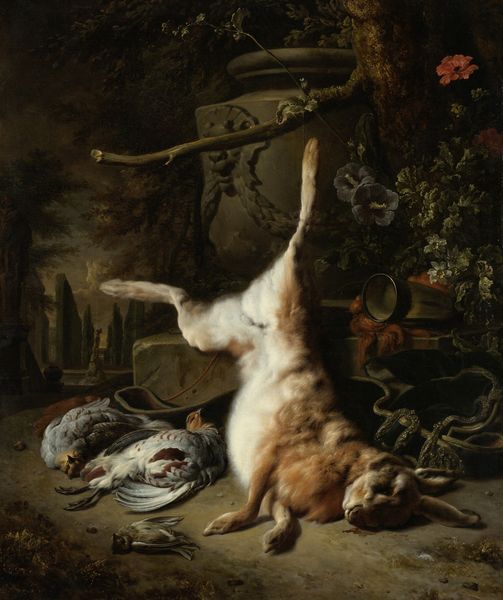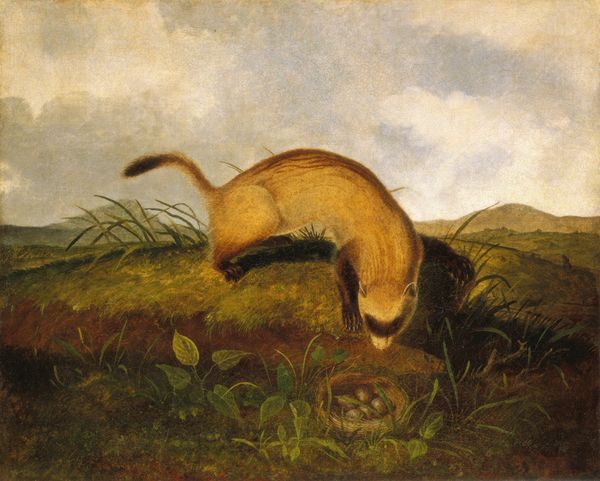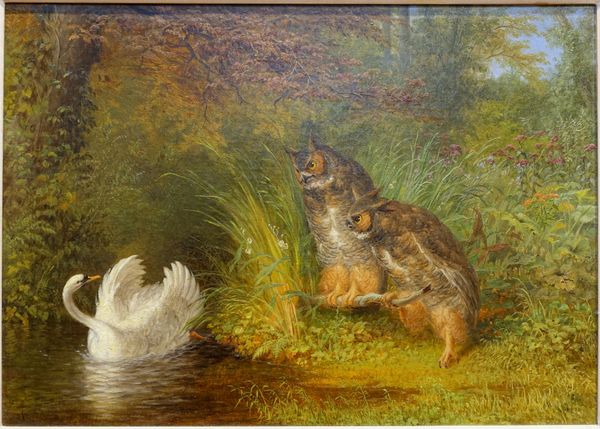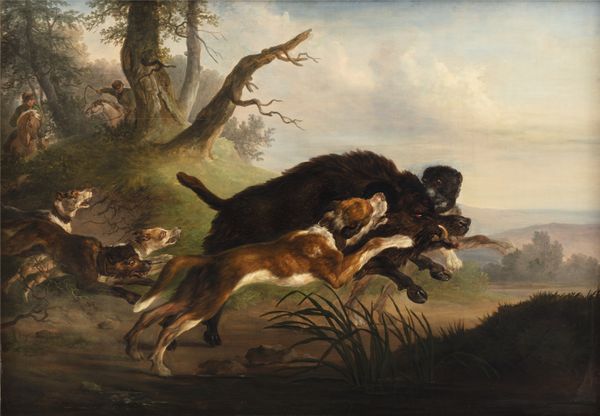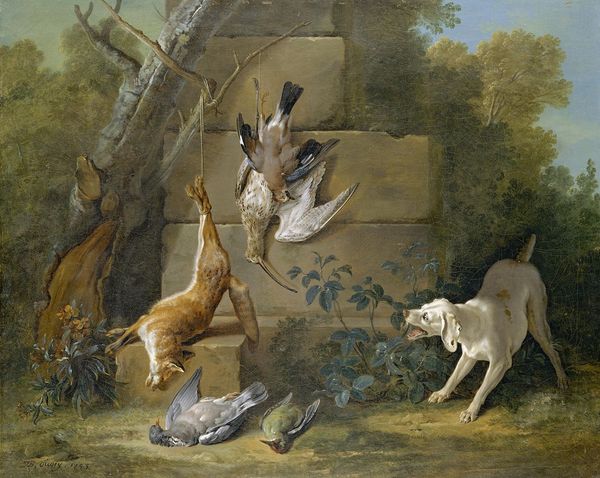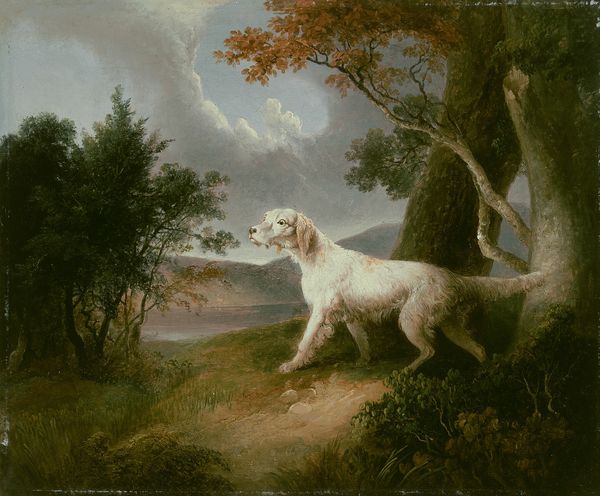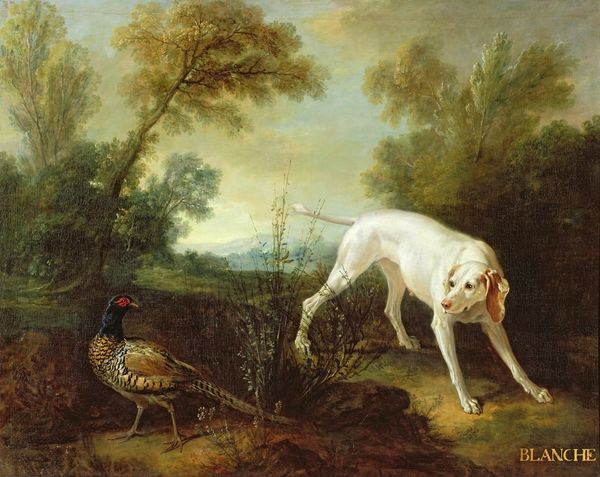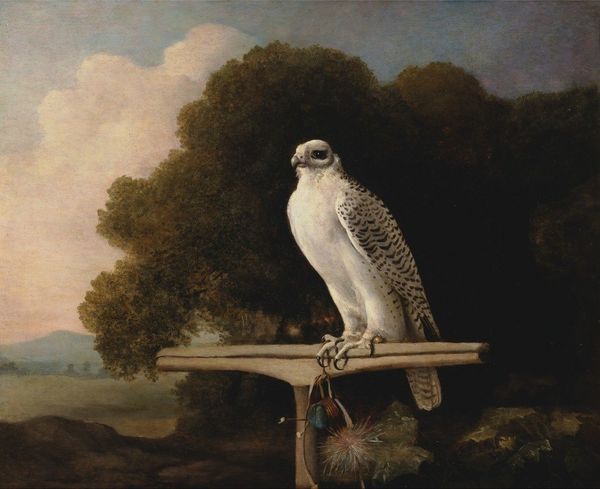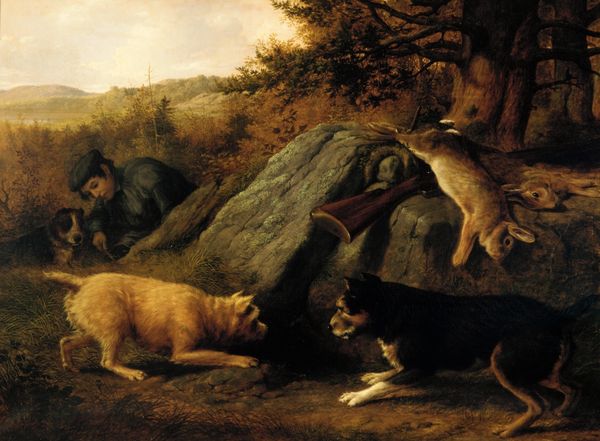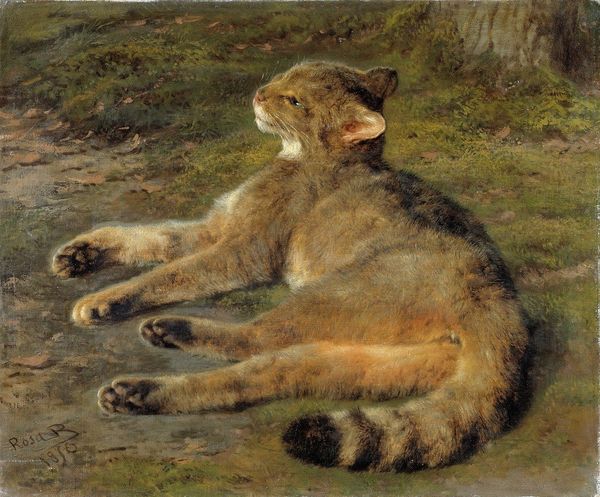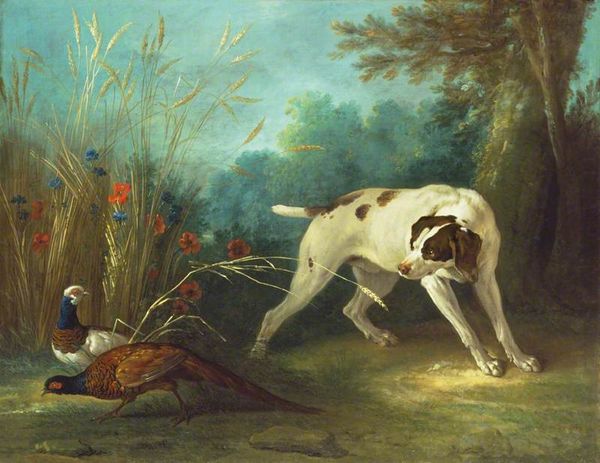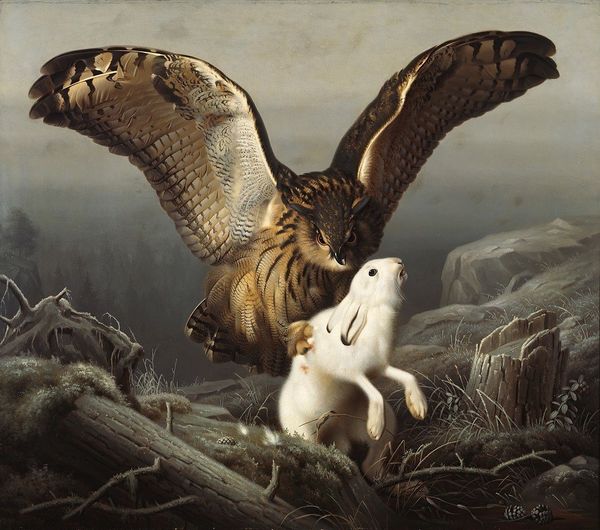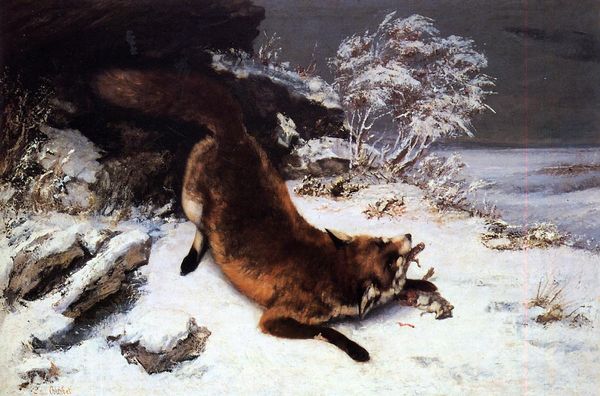
Copyright: Public domain
Curator: Ah, yes, William Holbrook Beard's "The Birdwatcher," painted in 1863. An interesting choice. Editor: It's the directness of it that gets me, this immediate tension. What's your take on this work? Curator: The charm is definitely on the surface. However, consider this through a critical lens of species hierarchy. Beard positions the cat, a domestic creature, in active pursuit of a wild bird. How does this narrative reinforce societal power dynamics? Think about the era, post-Civil War America; are there parallels in this depiction to social hierarchies of the time? Editor: That’s a really interesting way to look at it! I was only considering the obvious predator-prey relationship, and how this specific situation can resonate with me in my urban environment. Curator: Exactly! Now, examine the background: the dark, almost brooding sky versus the open field. Do those elements evoke freedom for one, but also constraint for the other? Beard was known for anthropomorphizing animals, projecting human qualities onto them. Does this render the animals less innocent, or is it reflective of human intentions toward other beings? Editor: So, by imposing human values onto these animals, Beard makes a commentary on our own biases? Curator: Precisely. Is Beard, through this simple tableau, engaging with complex discussions about our own impact on the natural world and on each other? This work goes beyond simply depicting a cat and a bird; it compels us to examine the ethics embedded in every gaze, every interaction. Editor: This definitely gives me a richer and deeper perspective on this apparently simple painting! Curator: Agreed. It's fascinating to observe how an artwork like "The Birdwatcher," which seemingly presents a straightforward scene, can reveal intricate layers of socio-political commentary through critical analysis.
Comments
No comments
Be the first to comment and join the conversation on the ultimate creative platform.

